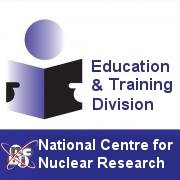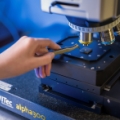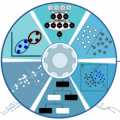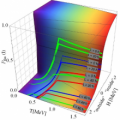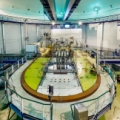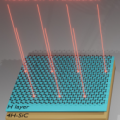News
How to prepare the surface of the new generation titanium implants?
2022.05.27 9:13 - Piotr Spinalski
Titanium-based materials are often used in the manufacture of medical implants. For the first time, scientists from the Materials Research Laboratory and the Center of Excellence NOMATEN NCBJ used the Raman imaging research technique to determine the spatial distribution and quantitative proportion of individual titanium oxide phases covering the surface of the material, which determines its properties.
----
International conference on materials science – the first of its kind in Poland
2022.05.24 9:06 - Marek Pawłowski
NCBJ organizes the 1st NOMATEN International Conference on Materials Informatics. Materials informatics is a new field of research that uses advanced IT tools to better understand and design materials needed primarily for work in extreme physical and chemical conditions, as well as in medicine. This subject is dealt with, among others, by originators and organizers of the conference – scientists from the NOMATEN Center of Excellence operating in Świerk.
----
Preventing the synthesis of super heavy elements nuclei
2022.05.16 18:56 - Marek Pawłowski
Scientists from NCBJ and UW have published a paper explaining what determines the success of the synthesis of the nuclei of the heaviest elements in fusion reactions. The performed calculations show that the dramatic decrease in the probability of synthesis with the increase in the atomic number of the nucleus formed can be explained assuming that the fusion takes place in the process of diffusion.
----
Thematic review of nuclear facilities – ongoing public consultations
2022.05.12 13:26 - Piotr Spinalski
Every 6 years, EU countries carry out mutual, thematic assessments of the safety of nuclear installations. In Poland, such an object is the MARIA research reactor. Until 27 May 2022, public consultations of the documents regulating the thematic review of nuclear facilities are ongoing.
----
Graphene as a magnetic field detector in fusion reactors
2022.04.27 12:18 - Piotr Spinalski
In fusion projects it is necessary to use materials resistant to high temperatures and radiation damage. Carbon-based materials, especially carbon nanotubes and graphene, are promising in this respect. Scientists from the NCBJ Reactor Research Department participated in the research on the resistance of graphene detectors to high neutron fluxes.
----


